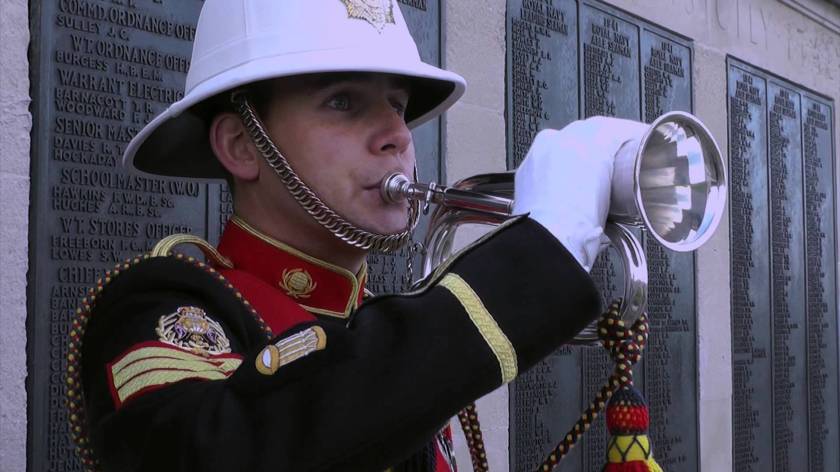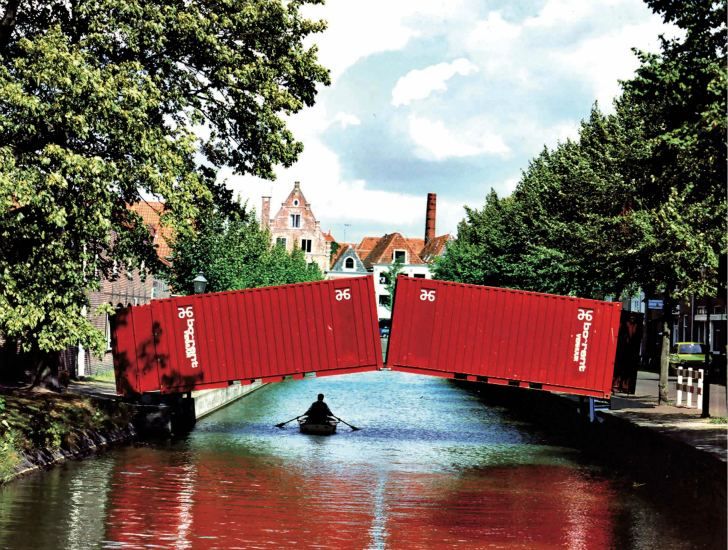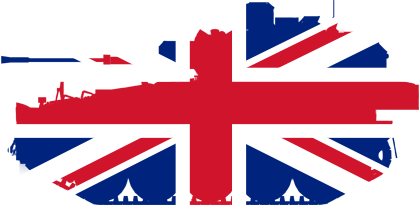By Think Defence
[Introduction by UK Land Power]
It’s the end of an era. TD is calling it a day.

For almost a decade, Think Defence has been one of the most fascinating and insightful online defence blogs. Founded at a time when people dismissed non-official commentary as ill-informed wishful thinking, Think Defence quickly established itself as a go-to resource for detailed briefings on strategy, policy and key capabilities. (It was also compulsory reading for engineers, logisticians, bridge fanciers and container geeks.) Championing UK Armed Forces, providing rigorous analysis of hot topics and a sensible forum of discussion for professionals and amateurs alike, any reader could be forgiven for thinking that the Think Defence blog was run by a team of 20-30 defence and security experts. Instead, it was created and run by one man with passion for all things military, devoting his time and energy free of change to all who were interested.
After 4,000 blog posts, 3.5 million words, 15 million page views, 1 million comments, and 18,000 followers on Twitter, Think Defence is read by Academia; Politicians, Civil servants in Defence Departments the world over; by Navies, Armies, and Air Forces; by Admirals, Generals, and Pilots; by the Defence Industry; and by legions of enthusiasts, many of whom are ex-service personnel.
Looking back at the blog’s achievements, highlights include the FRES masterpiece, which inspired a Parliamentary report on UK AFV procurement; providing stark and cutting analysis of the 2010 SDSR; highlighting the importance of UK shipbuilding; making a compelling case for the retention and renewal of the UK’s nuclear deterrence, CASD and SSBN; presenting the implications of Carrier Strike and the need for more escorts; explaining why the UK needed to acquire the F-35B versus the F-35C for the carriers, which contributed to the reversal of the change; the importance of helicopters; and the need for defence to guided by a clear underlying strategy.
Thanks to Think Defence, the UK Ministry of Defence has developed a better understanding of the blogging community and now sees it as important constituent target audience that facilitates its own internal discussion and policy as well as supporting external communication initiatives. Ultimately, UK defence is in a better place because of Think Defence. For all these reasons, we have many reasons to be thankful. We wish him well and know he will still contribute, even if it is less frequently.]
It didn’t seem right to allow Think Defence to ride into the sunset without setting an ongoing Defence discussion agenda. So, I asked him to generate a list of key discussion areas that other bloggers may wish to explore:
DISCUSSION POINT ONE – COMBATING DISINFORMATION AND POOR INFORMATION
With declining trust in traditional media organisations, the speed that disinformation can propagate, polarisation of news organisations on political lines, tendencies for confirmation bias and increasingly sophisticated media manipulation there exists a ‘reality gap’ that will be exploited by enemies. To provide a counter, there has to be three key attributes; speed, credibility and humour. How does the MoD generate these, can it harness an informal network of external defence commenters, how does it enable ‘mission command’ in social media for those serving in senior positions and how does it manage the inevitable when it happens if it releases its grip? Is it time for a Corps of Memes?
DISCUSSION POINT TWO – LEARNING FROM NEAR HISTORY AND ENSURING LESSONS LEARNED STAY LEARNED
We spend huge amounts of effort learning about lessons from the past and applying them to contemporary issues but some of the most pertinent lessons are those from near history. When I look at the lessons learned compendium from Iraq or the history of FRES, or complex weapons, it seems that there are two things happening; institutional knowledge of the history of some major projects is poor, and lessons are forgotten, or ignored. From the outside looking in, one could be forgiven for thinking there is greater effort put into learning the lessons from Waterloo than the evolution of MRAV to FRES to MIV. With even the NAO Major Projects Report now consigned to history, how do decision makers stay informed and avoid forgetting lessons from near history?
DISCUSSION POINT THREE – BREAKING THE FINANCIAL CRISIS CYCLE
Every recent defence review has resulted in a reduced percentage of national wealth being available for defence, every few years the National Audit Office gives the MoD a kick in the teeth about the affordability of its aspirations versus the reality of its budgets. This then initiates a series of cuts, project elongations, and various compensatory activities to bring the budget back into balance. This is hardly a neutral activity and creates cascading problems. How does the MoD break the perpetual crisis cycle?
DISCUSSION POINT FOUR – THE SPREADING OF GLOBAL BRITAIN JAM
As the UK moves into a post Brexit world in the next few years the armed forces will have to cope with any negative outcomes and play a role in promoting the ‘Global Britain’ message. This comes at a time when one might argue the greater threat to the UK is actually closer to home, supporting European NATO allies against a revanchist Russia. There is a danger than deployment to the Pacific, basing in the Gulf and operations in Africa become nothing more than tokenism that convinces precisely no one. Is it better to do less in any one place but at a greater scale rather being everywhere all the time but only at a token level? Or more simply, how does the UK prioritise to ensure our finite jam is not spread so thinly to become invisible?
DISCUSSION POINT FIVE – THE FUTURE OF AMPHIBIOUS FORCES
Coastlines are changing, becoming increasingly urbanised, developed and observable, the days of ‘landing on beaches where the enemy is not’ will be challenged by a combination of factors, including enemy observation and precision fires. The role of UK amphibious forces must change also, do we need an ability to land and sustain over the shore, can we now realistically do this against anything but the merest of opposition, do we have an ability to demine beaches and very shallow waters, how do we defend against enemy precision fires and observation? All these questions, and our stagnating capabilities, point to 3CDO being of less value than we might think. The discussion should be how we evolve the Royal Marine, perhaps, into a more maritime and littoral security, raiding and JPR type role, how they are integrated with RN/RFA shipping plans, future aviation, port development and the Army’s STRIKE concept. Preserving them in aspic is not the answer.
DISCUSSION POINT SIX – THE FUTURE OF AIRBORNE FORCES
As above to the same degree but with different details. What is the role of 16AAB, is it realistic, yes, of course we all know that air mobile is not air assault and that parachuting is by and large a niche means of theatre entry, but does 16AAB exist to support the Parachute Regiment or the other way around? As we saw in Afghanistan, air manoeuvre is not something perfectly capable of being carried out by the rest of the field Army. Is it time to, as with the Royal Marines, to recognise the changing reality of airborne operations and change the underlying structure and role of the Parachute Regiment and 16AAB?
DISCUSSION POINT SEVEN – REGIONAL FOCUS AREAS
That the UK has responsibilities and interests in pretty much all parts of the world is not in question, linking in with Discussion Point 4 (Jam) how should UK defence and security (including DFiD) address the Caribbean, North Africa, Central Africa, the Pacific, Middle East, North/East Europe, Afghanistan and the Artic. One example, we have a rotating naval presence in the Caribbean for regional security assurance, counter narcotics and disaster relief. Is this best met by the current policy or would the ships and personnel be better deployed elsewhere, replaced by a combination of resilience spending and improving the capabilities of local forces and agencies?
DISCUSSION POINT EIGHT – RECRUITING AND RETENTION
There are as many theories to why we continue to struggle with recruiting and retention as there are on anything, have at, but practical solutions only.
DISCUSSION POINT NINE – THE UNMANNED REVOLUTION HOW FAST AND FAR DO WE GO
Is it time for the UK armed forces to make a big leap, or is the current incremental approach just fine? Defence capability development is by its nature a relatively conservative endeavour, the manpower demand of unmanned systems and support costs are not insignificant and many very real downsides exist. In one or two areas though, is there scope for making a bit bet and taking a big risk? ASW using ‘motherships’, manned unmanned teaming for armoured close combat, airborne strike and interdiction against extremely demanding targets, to name just three. When HMS Warrior was launched, all other naval vessels were rendered obsolete, is there something similar if the risk was taken?
DISCUSSION POINT TEN – SHAPES AND SIZES
Wherever possible, electronic systems and weapons should be bounded by the dimensions of a NATO standard pallet or 20ft ISO container so they can be easily transported, moved from one donor vehicle to the next, transferred from a land role to one at sea, tested and stored more easily.
So there you go, please discuss… ☺
I can only offer my heartfelt thanks to the owner of this blog, and many others that have offered their best wishes and kind words, it is genuinely touching. Although I am stopping writing, Think Defence is moving to an online archive site and I will still drop in now and then on Twitter. Please remember, for every single thing I may have got right, there were many more that were wrong, dipping into the TD archive reveals some right howlers. Who knows what the future holds, I may get round to writing that definitive guide to ISO containers yet, but for now, thank you.
TD
And he couldn’t sign off without an image, but which to choose? A bridge or container? Why not both?



Thank you for all your hard work over the years, we’ve enjoyed reading your blog. All those interested in defence will miss your blog so much.
If in retirement you ever feel the need to put pen to paper on defence matters we would be more than willing to publish in our opinion section.
LikeLiked by 1 person
I myself, having only discovered the treasure trove that that is TD in the last two years, have only had the pleasure of participating in a relative few conversions there. It is my hope that the overall quality of the conversations on TD continues here, so far that hope has been fulfilled.
Being a former Marine of the US variety, the future of amphibious forces in general greatly interests me and I’ve wondered if, with all the declining budgets, now is the time for NATO or various allies (US, UK, Netherlands, Norway and possibly Sweden and Finland even though they are “neutral”), to consider a “Permanent” multinational Marine Expeditionary Unit/Task Force to help preserve each country’s own amphibious capabilities without having to shoulder the cost of an entire amphibious fleet. And if so, what would the unit look like and what would be its mission set? Would it be primarily a North Atlantic/Mediterranean unit focused on deterrence or would it operate globally and be actively involved in operations like Anti-Piracy operations off the Horn of Africa for example. Do they need flattop LHDs/BPCs or are LPD/LSD and Absalon or Damen Crossover type vessels enough? I, for one, think that would be an interesting and lively discussion to have.
LikeLike
Finland and Sweden are as neutral as Mexican industry is independent of USA’s economy.
https://mobile.navaltoday.com/2018/04/12/swedish-finnish-naval-task-group-exercise-starts-off-stockholm/
Finnish and Swedish navies have deep relationship as it is and both are members of JEF, Joint Expeditionary Force. The Baltic Sea is probably one of the prime places to develop one of a kind marine force for very particular operation environment. Small distances, at best ~50km from shore to shore in Finnish Gulf, couple of hundred of kms from Sweden to Estonia. Shallow, frozen in winter, cluttered with commerce. Three key areas: Kaliningrad, Gotland and Åland. Controlling all three would allow Russia to isolate Baltics and (re)capturing two of them requires marines and paratroopers. While the optimal composition for Baltic Sea aimed marine force might not be best for real blue water marine force there are probably some good lessons to be learned from operating in such a pond. As is evident from boats that Finnish and Swedish navy operates they are small, numerous and fast. There are no large LHDs/equivalent because of small distances involved. Something to ferry tanks would be useful though. Finnish Navy operates in the archipelago where island are small so no point in taking anything heavier to a small patch of dirt. As for possible Åland/Estonia reinforcement scenario ability to ferry heavier support is needed. Aah, Finnish and Swedish marines with organic tank support defending old city Tallin, only if Swedes had enough crews for their tanks that is.
LikeLike
“Finland and Sweden are as neutral as Mexican industry is independent of USA’s economy.” – Yes, that is why I put neutral in quotes.
I’ve drooled over some of the boats in Scandinavian service, particularly the CB-90H, for years now hoping that that someone at 8th and I would see how valuable they could be in Marine service, especially with the current pivot to the Pacific and the numerous littoral and islands it encompases.
LikeLike
Why settle for that when you can choose the IFV of seas, Watercat M18. For measly price of 3 million USD you’ll get a beast that’ll transport a platoon under Stanag 3 (or so) level armour protection at 35 knots. It can probably sport light RCWS with 20mm or even 30×173, not sure but the Finnish U-700s have Saab Trackfire with NSV and PKM.

https://en.wikipedia.org/wiki/Jehu-class_landing_craft
LikeLike
Dear Sir
I have tried to write to you by email before … but now there doesn’t seem to be that option…
First, thank you for all your hard work supporting the UK armed forces.
I don’t use twitter but noted your comments about investing in people, particularly the idea
‘Reconfigure RMAS and first five years of officer service so that all officers obtain a science or arts degree ‘
I think you make a good point but it needs finessing
A lot of the direct entrants will have a first degree already and those drawn from the ranks a little rusty academically.. what would work would be a modular postgraduate/masters degree in ‘Military Operations’ [or what ever you like to call it]. Working with a university like Birbeck/Open University you could create a suitable course built around units in Management, History, leadership, et al that an officer could take over the course of their early career.
indeed your consultancy could even begin the process of bringing parties together to establish such an opportunity. IT wold bring real added value to a career.
LikeLike
Think Defence, the end of an era is very sad but poignant for two linked reasons. Firstly, the loss of an excellent influential blog with thought provoking topics and commentary. Secondly, the loss government thinking for over a decade on its, but now non-vote winning, first national priority – Defence of the nation. Happy retirement to TD.
LikeLike
My vote goes for this one on TD’s list. From the MDP (and actions that align closely with it, timewise) we can read that the wider Gulf and N. Atlantic have increased in priority, but a comprehensive overview’ discussion is nowhere to be found:
“DISCUSSION POINT SEVEN – REGIONAL FOCUS AREAS
That the UK has responsibilities and interests in pretty much all parts of the world is not in question, linking in with Discussion Point 4 (Jam) how should UK defence and security (including DFiD) address the Caribbean, North Africa, Central Africa, the Pacific, Middle East, North/East Europe, Afghanistan and the Arctic.”
As for the last one, we speak about High North more often than not, which is quite different from e.g. how Russia defines and plans operations in “the Arctic”:
https://en.wikipedia.org/wiki/File:JSC_Nortern_Fleet,_2014.svg
LikeLike
Thanks TD for your kindness in publishing a blog on small arms by an old sailor a few months ago. Some of the comments were a bit caustic, as deserved, but some were quite supportive. The great caliber debate grinds on, but at least there is more and more support for a common intermediate round for both rifles and machine guns. We will soon be back 70 years to the 0.280 and the EM2.
Here is another Key Topic for discussion. “Do we really need a separate Air Force?”
LikeLike